Dairy Goat Breeds
Want to add farm-fresh milk to your home every day? Then, learn which dairy goat breeds are the best fit for you and your family! Not all breeds work well with all families or setups, and knowing the temperament, milk flow, and butter fat before you decide will help you match up with goats you can grow a herd with.
Bookmark this goat breeds list so you can refer to it anytime you want to add new goats to your growing herd.
Don’t forget to grab your FREE Dairy goat guide below!
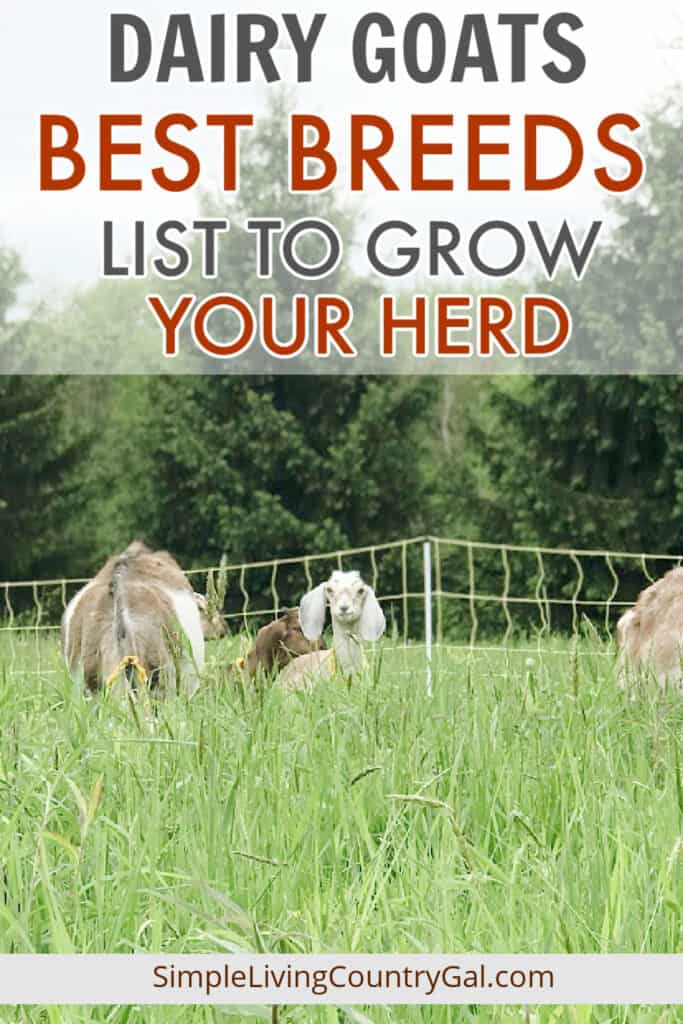
Raising livestock is a give-and-take on a homestead. You give them care, food, and shelter, and they give you something in return, whether that be eggs, fleece, meat, or milk. When it comes to raising goats, dairy is my top choice of breeds. Mainly because their milk is an ingredient in so many items. Things you can use yourself or sell to offset costs.
What can you do with goat milk?
- Drink it! Raw is our favorite way.
- Goat milk soap
- A wide array of cheeses
- Use it to make creamy fudge, goat milk pancakes, and other baked goods.
- Lotions and creams
If you do not have goats just yet, this list will help you narrow things down because not all goats are created equal. This means each breed will have its pros, cons, and milk characteristics that you will want to be aware of before you decide.
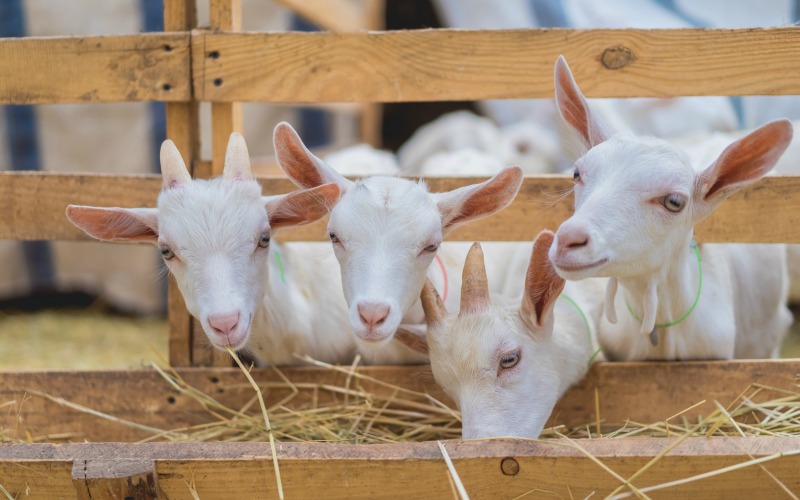
Adding goats to your homestead is a great way to see if dairy farming is right for you. Not all families can afford to buy, keep, and maintain a dairy cow. Cows are big and can be intimidating. That is why dairy goats are becoming increasingly popular for family homesteads.
Be sure to grab the FREE Dairy Goat Breeds Checklist below!
Goats are smaller animals that require less room and produce less milk. This means you do not need to invest a ton of cash upfront to create a home for them. Not only that, but you will not be drowning in milk after just a few days.
Dairy goats do give a lot less milk when compared to a cow which is actually the best part of having them. A good dairy goat can produce a gallon a day if not more and that is more than enough for a growing family.
Deciding to get a dairy goat is the easy part. Deciding which dairy goat breed to get is another story. There are a few things to consider when selecting your breed of dairy goat and each one carries it’s own weight of importance.
Goat size = Teat Size
The size of the goat will determine the size of their teats. The larger the teat, I believe, the easier it is to milk them. If the teats are large you can use your entire hand to milk which is better if you have arthritis or carpal tunnel.
Smaller teats only allow for two fingers when milking, which can be painful if you have any issues.
3L Goat Electric Milking Machine, Automatic Rechargeable Battery Powered Pulsation Vacuum Pump with 2 Teat Cups Stainless Steel Bucket for Goat(Battery Model)

What is their temperament?
Some breeds are calm, and some are playful. Some breeds are loud, and some are shy. Knowing what best fits your family’s age and location is more important than people realize.
If you live close to your neighbors, then the vocal Nubian might not be a wise choice. If you have very young children, then a small breed such as the Nigerian Dwarf may be a better fit.
SLCG Pro Tip: READ: HOW TO EASILY TRAIN YOUR GOATS to teach them to come when called. This is a great way to raise a herd that is obedient and easier to raise.
How much milk do they produce?
This one is pretty self-explanatory. If a breed of goat produces up over a gallon of milk a day and you live alone, then this might not be the best pick for you.
The same is true for a breed that produces just 1/2 gallon of milk a day, and you have 5 young kids at home. Pick the production level of goat breed that best fits your family size. Now, I am not saying you can’t have a small-producing goat if your family is large. Just know that you may want more than ONE milking goat if this is the case.
It is also important to note that the milk production of each breed is simply the market average and not a guarantee. Milk amounts also depend on good lineage (milk lines), quality feed and hay, adequate housing, and a good healthy countenance overall.
Stressed underfed goats will NOT produce much milk. So please make sure you are consistent with your goat’s care.
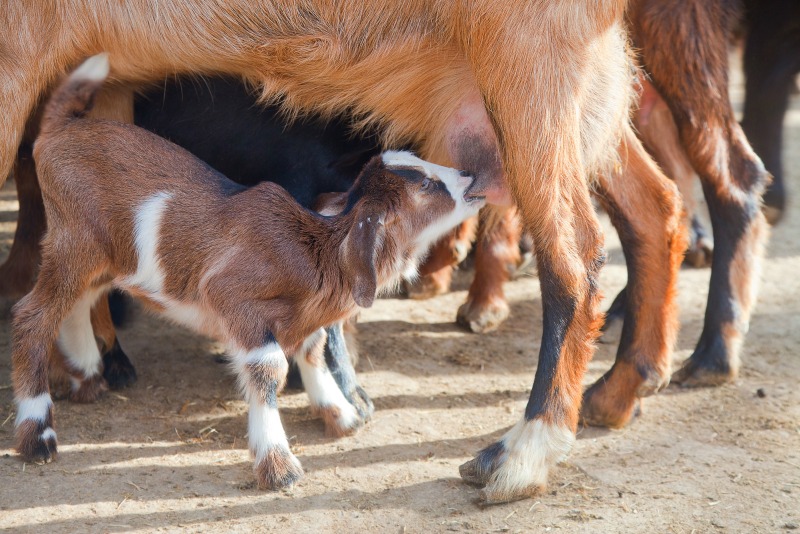
What is their butterfat content?
Butterfat, also known as milk fat, is the fat content that is found in milk. The amount of butterfat differs depending on the breed of goat. Typically goat milk can contain anywhere from 1%-10% butterfat which is much more than a dairy cow and one of the perks of owning and milking dairy goats.
How much butterfat do you want?
How much butterfat you want will depend on what you plan to do with the milk.
Cheese – If you want to make cheese, then a higher butterfat content is key. The higher the butterfat, the more cheese you will get per gallon of milk.
Soap – If you want to make soap, then the higher the butterfat, the more moisturizing your soap will be. Make a soap with a very high butterfat goat milk and you will find yourself with some of the most moisturizing soaps you have ever tried. Check out this article on Mother Earth News that compares farm fresh soaps to store-bought.
Milk – If you plan to drink the milk only, then a lower butterfat might be a better option since it is easier on the waistline, however, if you have young children then a higher butterfat milk might be your goal.
Nutrients – Containing key nutrients and vitamins such as A, D, E, and K, high butterfat milk is a great option for young growing children.
Dairy Goat Breeds
Let’s look at the most popular dairy goats and a few key characteristics of their breed and milk quality.
The Nubian Goat
Widely known for their long pendulous ears, these large dairy goats are by far my favorite and the ones we choose to raise on our own homestead.
Since they are larger that means they have larger teats which makes milking a breeze. You can either milk once a day or twice depending on your schedule and milk needs.
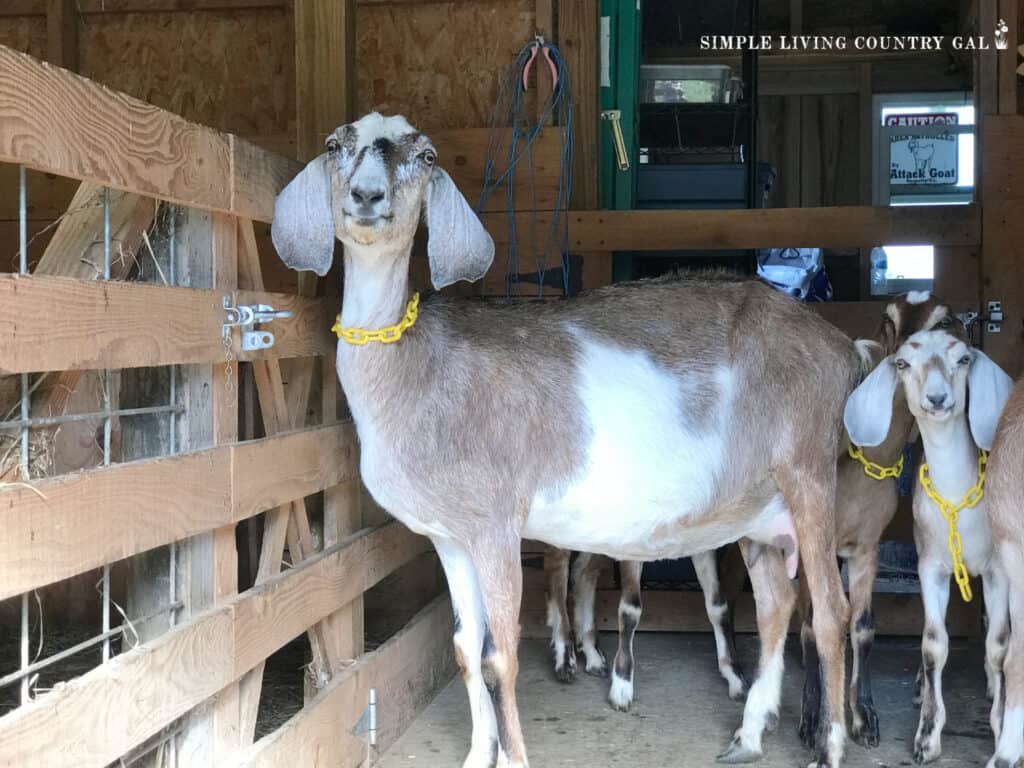
A wonderful tasting milk with a 4-5% butterfat content giving their milk a lovely sweet flavor. My family loves the taste of Nubian milk and even guests cannot tell a difference between our goat’s milk and cow milk purchased at the store.
Even though they are not considered the top producing goat breed, they can still give you well over a gallon a day with some producing close to 2 gallons a day.
A bit of a stinker, you will need to work with them just a bit to ensure you do not have any issues on the stand. These are really intelligent goats and just a day of training is usually all you need to get them ready.
Nubians are also a more vocal goat and if they are hungry, irritated, in heat, or simply bored they will let you know!
Nubians have a hearty 4-5% butterfat content and produce 1-2 gallons a day.
The Alpine Goat
A nice large goat that is known as a good steady milker with more consistent averages of 1-2 gallons a day.
These goats are medium to large in size and have tall ears. They are great producers and will give you more milk than other goats. With a lower butterfat content of 3.5%, they are more about quantity here.
Like the Nubians, they have larger teats which makes milking much easier and quicker too. A docile goat they are a dream on the milk stand or anywhere you want to milk.
I have milked these goats tied to a fence and they have done just fine.
Alpines have a 3.5% butterfat content and can produce at a steady rate of 1-2 gallons of milk a day.
The Lamancha Goat
Best known for their tiny ears so much so that they look as if they have none at all, these are a medium sized breed of dairy goat that resembles the build of a Nubian.
A very calm and docile goat, they are known for producing lots of butterfat-rich milk. A big perk of the Lamancha Goat is they are long milk producers with some milking up to two years. This is huge especially if you are not fond of breeding every year to keep your goats in milk.
Lamancha’s have a 3.9% butterfat content and can produce 1-2 gallons of milk a day.
The Nigerian Dwarf Goat
A miniature sized dairy goat and a favorite of young families with small children. These goats are very playful and friendly and because of their smaller size tend to be a better fit if you have young children that are with you at chore time.
Nigerian Dwarf goats have smaller teats so they can be tricky to milk if you have big hands or issues such as carpal tunnel. Fingertip milking is usually required to milk but once you get the hang of it, it’s really quite easy to do.
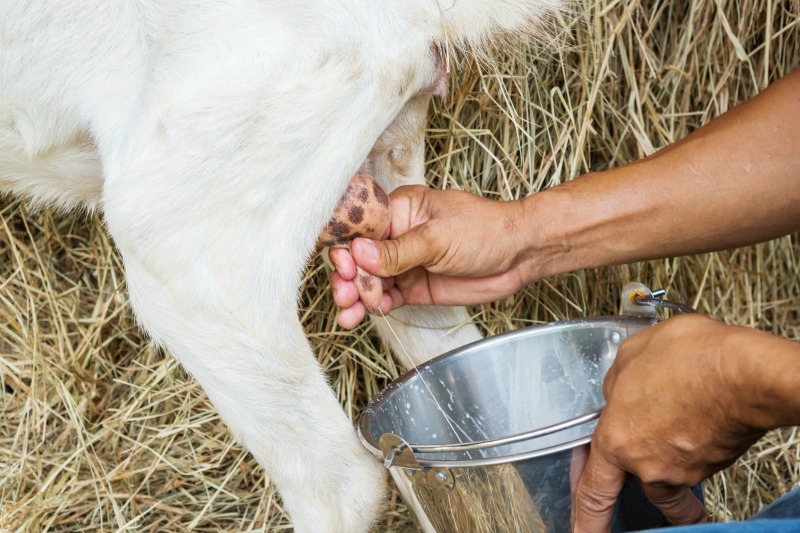
Since these goats are smaller their milk production is as well, so more than one doe in milk might be needed to produce enough for a larger family.
You will also need a ramp of some sort for the milk stand especially if you have a full sized stand. This is easy to make by attaching boards horizontally to a ramp board that you can securely attach to the base of the stand using hinges.
Nigerian’s have a 6. 5% butterfat content with some reaching as high as 10% and produce 1-3 quarts a day.
Oberhasli
Known for their beautiful coats the Oberhasli is another great family milk goat. They are very friendly and not easily frightened so they do quite well in the milk stand.
Another medium-large sized goat they have larger teats for easier milking. They are excellent producers giving up to 2.5 gallons a day.
They are great workers and do quite well as a pack goat giving this breed another check in the productivity column.
They have a 3.2%butterfatt content and produce an average of 2 gallons a day with some over 3.
Sanaan
This large breed goat is the top milk producer on our list today. Producing up to 3 gallons a milk every day, they are a great option for young, growing and large families.
This all-white goat has straight ears and short hair that really makes them stand out in a mixed herd. Since this is a large dairy goat, it comes the perk of large teats for easier milking.
Even though they are large, they are very docile earning them the name of “Gentle Giant”. They are a favorite large breed for even young families.
They have a butterfat content at 3% and produce around 1 – 3 gallons of milk a day. The lower butterfat content allows this milk to resemble the 2% you find in the grocery store.
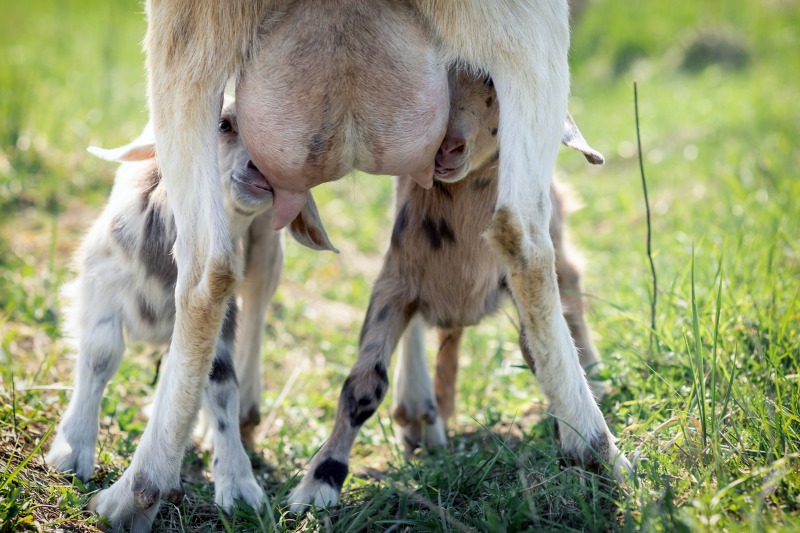
Toggenburg
Toggs might be best known for their wattles which are those little appendages on the throat. Although this trait is not exclusive to the Togg, it is more common with this breed.
They are a medium sized goat that comes in a variety of colors. They are very calm and do well on the milk stand.
A downside to this breed is the actual taste of the milk. Although I have not tasted it myself, I have heard that it can have a bit of a “goaty” flavor. If you are not sure, but just loves this breed I suggest tasting before you buy.
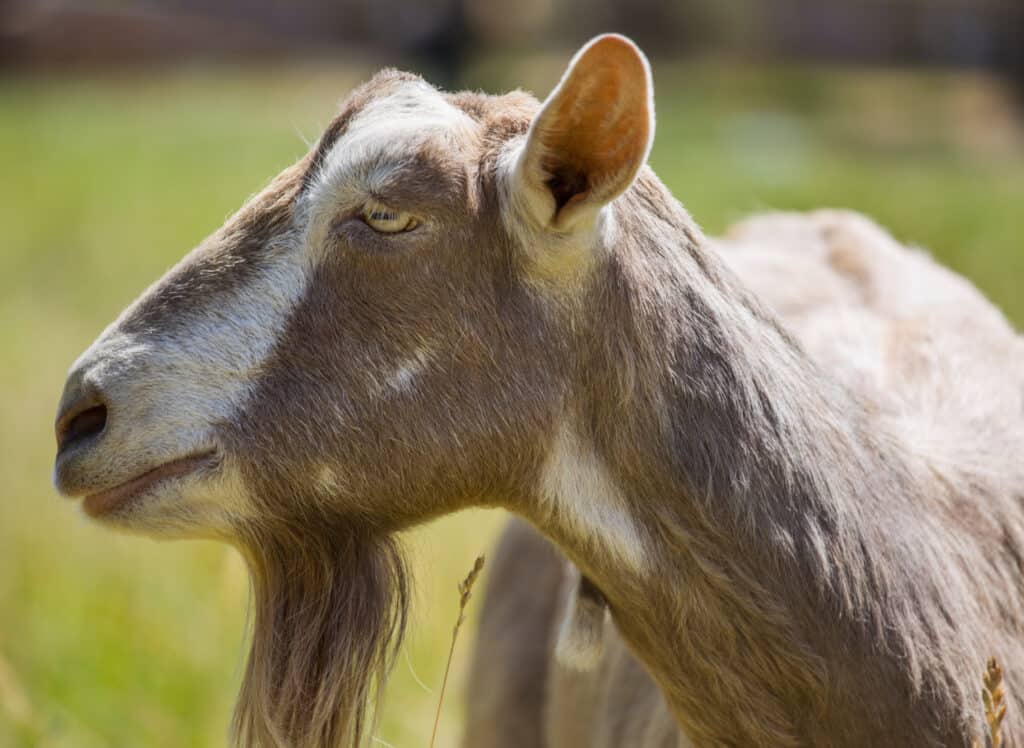
Some folks don’t mind the goaty taste while others don’t even notice it. So test it out and see before you invest in this dairy breed.
They have a lower butterfat content at 3.2% and produce up over 1 ½ gallon a day.
Deciding to add a dairy goat to your farm or homestead is an exciting time. Taking your self-sufficient lifestyle to the next level is the main reason for taking this big step.
READ: 8 SUPER SIMPLE STEPS TO DELICIOUS TASTING GOAT MILK for tips on how to keep odors from taking over your fresh milk.
Yes, you will now be more tied to your home than before. Dairy goats need to be milked every single day on the clock. Consistency is key to good production so keep this in mind before diving in. The perks to owning dairy goats far outweigh the commitment.
Fresh milk, delicious varieties of cheese, luxurious soaps and even butter are all things you can now add to your homesteading skills. Grow it, Raise it, Make it….so you do not have to buy; it is the reason we are homesteaders, and raising dairy goats will be worth the time and money investment!
Now that you have read this list of dairy goat breeds, which one will you choose for your family? Comment below; I would love to hear what you decide!
More Goat Care Reads:
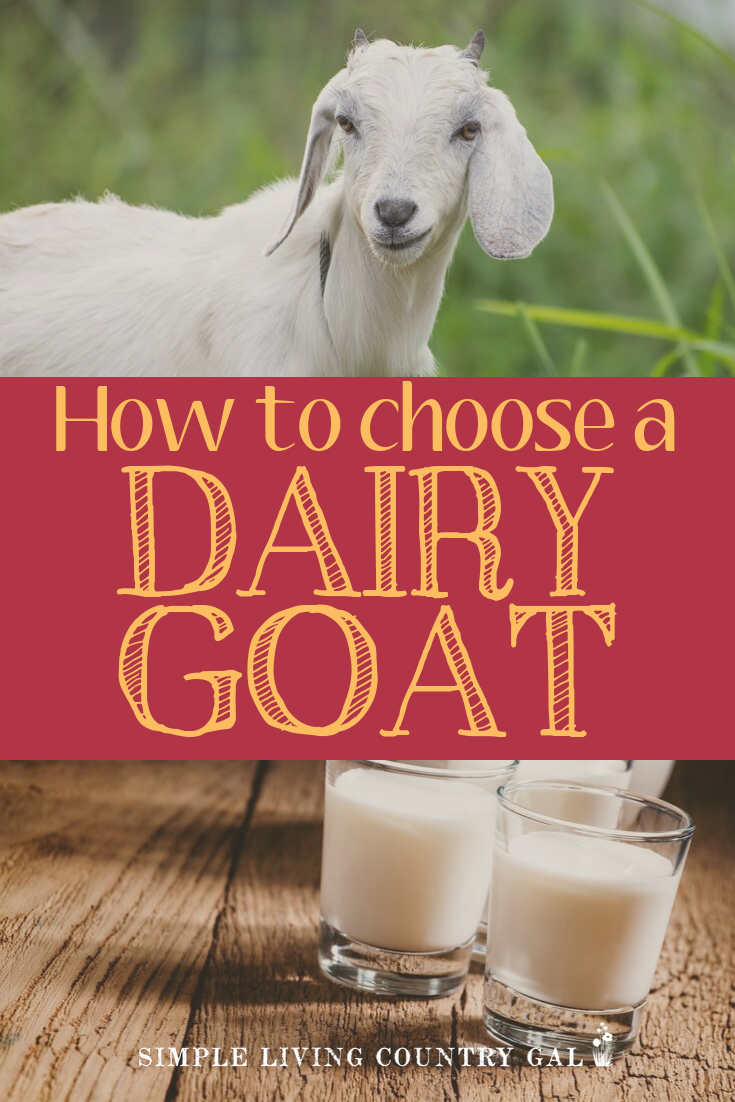




Nice write up on the goat breeds – we have the Nigerians! Thanks for sharing at the Homestead Blog Hop!
Oh, I just love Nigerians!
Great article on goats!! It brought back all my 4-H memories of raising dairy goats and showing them! We started with goats cause my little sister had really bad eczema as a baby and goat milk was the only thing that cleared it up. Our first goat was a Nubian and quickly we ended up with a small herd. We had Nubians, Saanens, Alpines, and LaManchas. At one point we have over 40 goats. My sister and I would get up early and each milk 4 or 5 goats and then we bottle fed all the babies. It was a lot of work…but I am so grateful for the opportunity to have a small farm growing up. I would love to someday have goats again. In the meantime, I fill my house with all kinds of other critters to love until I can have a place where having goats and other farm animals is possible.
Wow, Sandy!!
Over 40 goats! I can’t even imagine! I bet that was a lot of work…fun but still a lot of work!
You mention Toggs do best in cold climates. Any thoughts on what likely could go wrong if raising Toggs in TX or FL?
The main thing to watch for is their water intake. You may also need to clip them in the summer if they seem to not be handling the heat well. Finally shaded areas, super important to give them a place to get out of the heat of the sun.
Good luck!
Tracy Lynn
Cool. Thanks so much!
We have decided on Mini Nubians…I’m so excited to get started with our small homestead. Thank you so much for all the information you have shared in these articles. It means so much!
Can different breeds be kept together? I think it would be nice to have a couple Nigerians (high butterfat, less milk) and a couple Alpines or Nubians (lower butterfat, more milk) for making different things. Will they get along with each other? Are there any concerns with the smaller goats being bullied? Thanks!
Different breeds can be kept together, with a few caveats. Polled and unpolled goats together can spell disaster, so if you have a breed with horns and want to keep them with a breed that doesn’t, dehorn them first.
Size is also an issue. A dwarf goat with a Saanen would not really work, during playtime, the Saanen could prove to be too large for the Dwarf. You can also get some mini versions of the standard breeds (I believe currently there are mini Saanen, LaMancha, Alpine, Sable, Guernsey, Oberhalsi, Nubian and Toggenburgs available). Not as small as a Dwarf, but still smaller than their standard versions. They are often crossed with Nigerians so some of these mini versions will have a higher butterfat content than their standard versions, milk test if you don’t want that.
You can also just keep two separate herds if you want some Dwarfs and some standards.
Toggenburgs and Oberhalsis are from Switzerland, where people preferred their goats to have stronger tasting milk (a.k.a. the goaty flavour). Which is why a lot of Americans don’t really care for this. Alpines have varying milk taste, so best to try the milk of a particular doe you are interested in before purchase.
Milk taste depends a lot on butterfat content, but what they are fed is also a determining factor. Some people claim that bucks in a rut that is nearby when a doe is milked will cause the taste to be off. Other say it makes no difference. If you want to be sure, only keep does, or make sure your bucks are on another part of the property (still housed with some wethers for company and in sight of the other goats off course).
Personally I dream of a farm with all types of livestock and fruit and vegetables. For goats I’d prefer to keep a herd of Nigerian Dwarfs for my cheeses and then a herd of mixed miniature dairy goats (Saanen, Alpine, Sable, Toggenburg, Oberhalsi, Nubian). Also a smaller herd of Kinder goats for meat.
Thank you for sharing so much useful information on dairy goats. I agree with the bucks, they can alter the taste of the milk as well as the food you feed and the supplements or herbs you give. We prefer to raise Nubians and love the taste of their milk.
Tracy Lynn